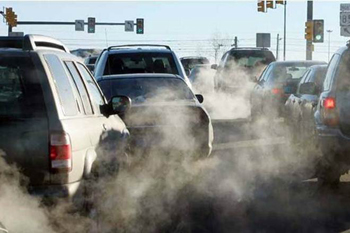London, Mar 4: Air pollution may increase the potential of bacteria to cause respiratory infections by reducing the effectiveness of antibiotic treatment, scientists have found for the first time.
The study by researchers at the University of Leicester in the UK has important implications for the treatment of infectious diseases, which are known to be increased in areas with high levels of air pollution.
They looked into how air pollution affects the bacteria living in our bodies, specifically the respiratory tract - the nose, throat and lungs.
A major component of air pollution is black carbon, which is produced through the burning of fossil fuels such as diesel, biofuels and biomass.
The research shows that this pollutant changes the way in which bacteria grow and form communities, which could affect how they survive on the lining of our respiratory tracts and how well they are able to hide from, and combat, our immune systems.
"This work increases our understanding of how air pollution affects human health," said Julie Morrissey, Associate Professor at Leicester.
"It shows that the bacteria which cause respiratory infections are affected by air pollution, possibly increasing the risk of infection and the effectiveness of antibiotic treatment of these illnesses," said Morrissey.
"Our research could initiate an entirely new understanding of how air pollution affects human health. It will lead to enhancement of research to understand how air pollution leads to severe respiratory problems and perturbs the environmental cycles essential for life," Morrissey said.
"Everybody worldwide is exposed to air pollution every time they breathe," Shane Hussey and Jo Purves, research associates working on the project said.
"It is something we cannot limit our exposure to as individuals, but we know that it can make us ill. So we need to understand what it is doing to us, how it is making us unhealthy, and how we might be able to stop these effects," they said.
The research focused on two human pathogens, Staphylococcus aureus and Streptococcus pneumoniae, which are both major causes of respiratory diseases and exhibit high levels of resistance to antibiotics.
The team found that black carbon alters the antibiotic tolerance of Staphylococcus aureus communities and importantly increases the resistance of communities of Streptococcus pneumoniae to penicillin, the front line treatment of bacterial pneumonia.
It was also found that black carbon caused Streptococcus pneumoniae to spread from the nose to the lower respiratory tract, which is a key step in development of disease.
The study was published in the journal Environmental Microbiology.






Comments
Add new comment